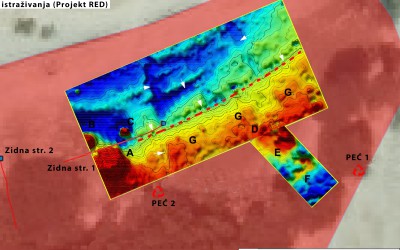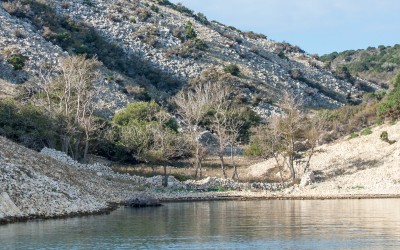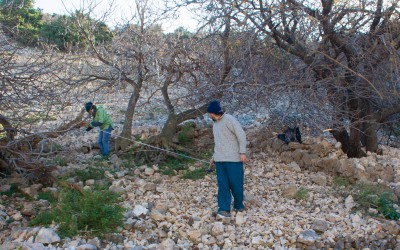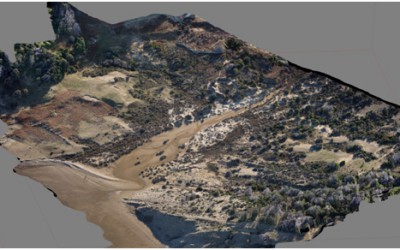Rab island – Mahućina bay
Geophysics in Mahućina bay, Lopar, Rab Island
10th – 11th December 2014
In Mahućina bay (Lopar, Rab island) field surveys located a large amount of pottery waste and fragments of kiln’s structure. These finds allowed to suppose the existence of a pottery kiln while further inspection of the bays southern slopes allowed to propose its possible location. Due to the finds’ characteristics its is undoubtedly a site datable to Roman times.
In order to confirm the location of the kiln geophysical measurements were carried out on the southern slope and the flatland in the bays hinterland where finds are abundant. Magnetometer measurements were carried out and interpreted by the external collaborator Branko Mušič PhD (Faculty of Philosophy – University of Ljubljana, Gearh d. o. o.) in collaboration with project’s RED PI Goranka Lipovac Vrkljan PhD and team member Ana Konestra.
The results of anomalies interpretation allowed to identified two areas:
1. an area of high values that stretches along the southern slope and the southern part of the flatland, throughout the width of the polygon. Areas of very high magnetic anomalies have been identified in the area (A-F);
2. an area of low values that stretches on the northern part of the flatland, characterised by the negative gradients of modern drywall structures;
The area of high values, apart from anomalies A-F, has been interpreted as the area of higher concentration of wasters, while in the area of lower values, where ancient structures had been supposed, there is no indication of the existence of structures stretching in an orientation different than that of the modern drywalls. Thus, either ancient structures are not present or they have been incorporated within the more recent ones. By analysing anomalies A, B, C and D it can be supposed that at least in three cases they could indicate the existence of pottery kilns or their remains, while in one case a different kind of structure could be supposed, perhaps a smelting furnace.
In-depth results of geophysics in Mahućina bay are available here.







